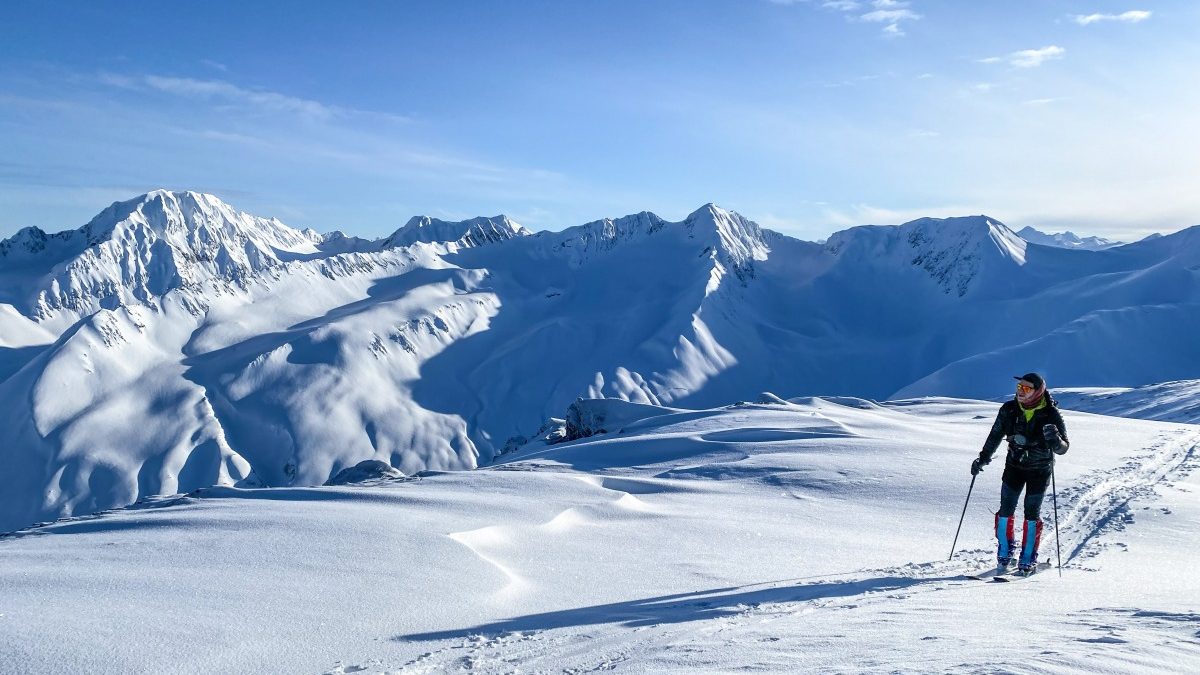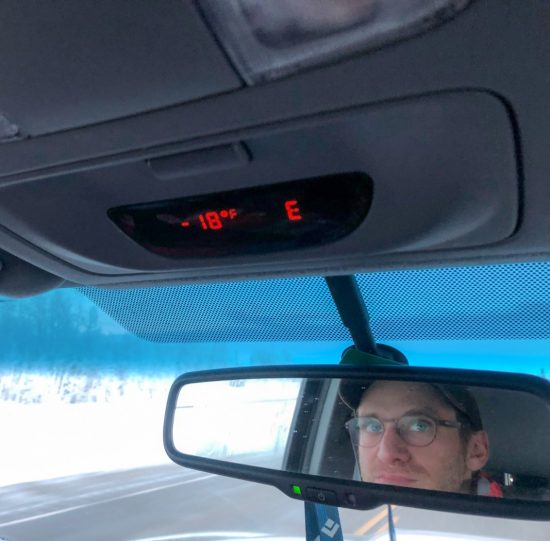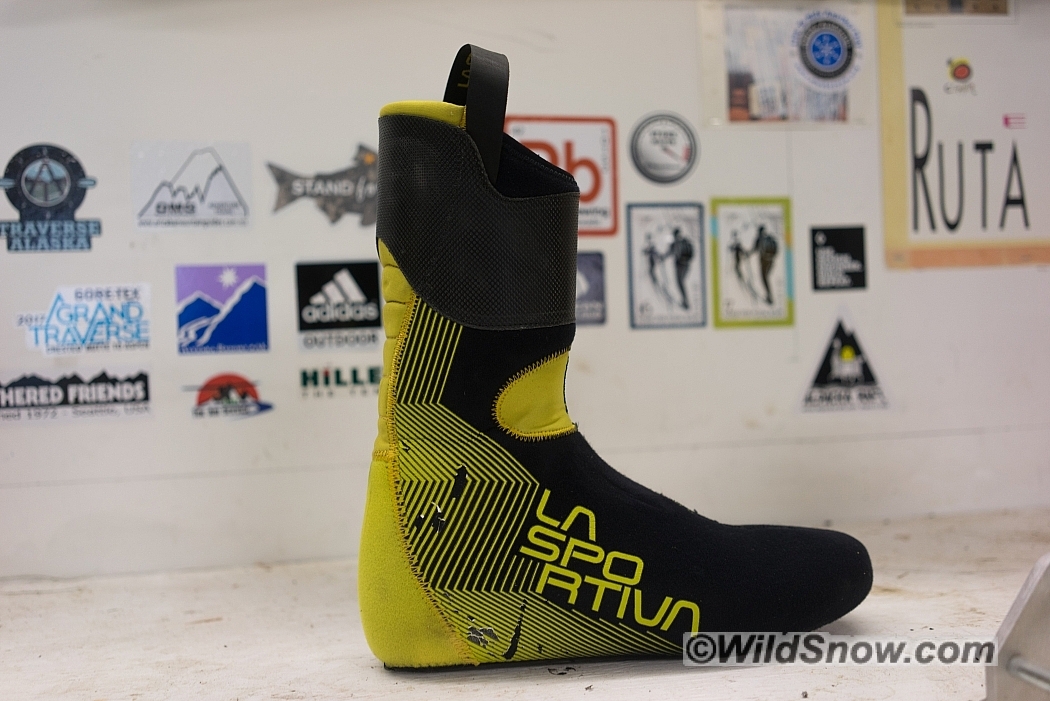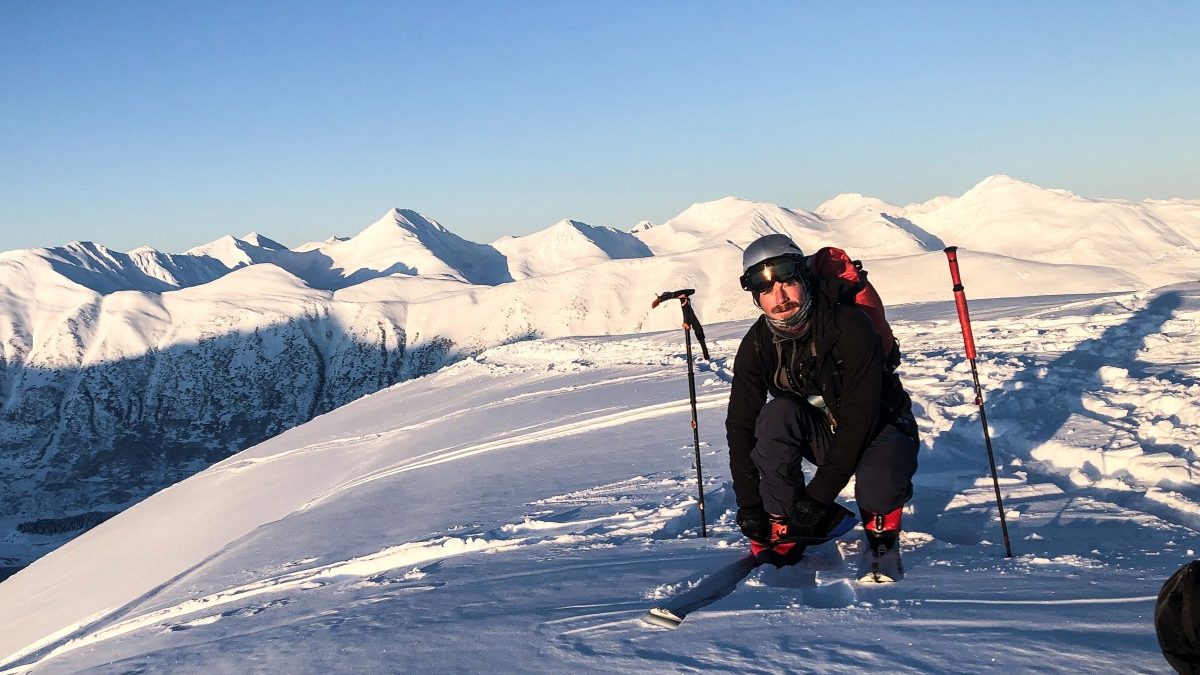Our pilot, Doug, stepped out of his yellow Bushhawk airplane on the glacier and said, “well it was close to -20 in town, must a been real cold out here!”
It was.
Just before the pandemic set in last March, I was in the Neacola Mountains of the southern Alaska Range in Lake Clark National Park. We had hoped for some early spring powder conditions, and while we had an amazing time in the mountains, it was still full-on Alaska winter. We didn’t have a reliable thermometer with us — it bottomed out at -15 or so — all we could tell was that it was darn chilly.
I had light ski-mo style boots (La Sportiva Sytrons) for the trip, with their correspondingly light liners. I have had similar boots down to -40 on various trips in Alaska. That’s cold enough that it no longer matters whether I clarify units (F or C), most things to stop working, and frostbite is all too easy to come by. With good self care and a few simple tricks, I don’t change out my boot or use ‘cold weather’ specific liners.
Although moments of cold toes are unavoidable, toasty toes aren’t a pipe dream in subzero temps. Here’s a few tips:
Liners
I know, your feet are cold, so you want more insulation on them, right? Well, sometimes. Warm liners are awesome, but dry liners are even better — this means that bigger liners are not always the way to go. I really like liners that breathe even more than liners that are warm. Dry feet not only keep you warm, they stave off blisters and bruises. Thick liners might feel great in the morning, but sweaty feet on that first uphill might mean even colder toes in the afternoon.
No matter what, if the temps are cold and you ski today, make sure you pull your liners and footbeds out to fully dry if you’re skiing tomorrow. On an expedition, sleep with liners in your sleeping bag. On some trips, I might even bring a second pair of liners just to have a dry set.
I know a number of folks in Alaska that swear by super warm Intuitions, and if they work for your feet, great. But don’t feel like you have to run out and buy new liners before you head out on super cold days. If you do up your liners and are using a lighter boot, make sure you aren’t just squeezing feet into a liner that’s too big for a small shell – you could actually end up with colder toes.
Socks
Big, fluffy, warm socks are a must for hanging out in the tent, sitting by the fire, or regrouping at the hut. They are a bad idea in your ski boots. I wear warmer socks on cold days, but still keep it to a true ski sock that doesn’t constrict blood flow or bunch up around the toes (I tend to like ski socks advertised as ‘medium’ weight). Also, I am a big fan of extra socks in the pack, especially on big days in the cold. You can use them to store stuff or keep water bottles insulated, and if you need a dry set it’s worth the time to stop and change yours out.
The luddite in my has kept boot heaters and heated footbeds at bay, but I know they work for some folks (I just don’t like the idea of batteries sitting between me and warm toes). I also don’t like how chem packs feel in boots, but hey, whatever works…
Clothes
It is tough (though not impossible) to have really cold feet if you are not really cold too. Keeping your legs and core warm keeps your extremities warm.
I know, you already have a puffy jacket in your bag and know about long underwear. Layers often overlooked, however, give adjustability to your legs on cold days. This might be side-zip hardshells or down pants, but lately my favorite layer has been an insulated skirt. Women in the backcountry have been on the cutting edge of this one for a while. I have been jealous of my wife’s down skirt for years; this year, she bought me one, it’s pink and it’s amazing. You can zip it on or off easily to add just the right touch of warmth – not too much to skin up with on a cold track, but enough to make a real difference, even on the downs. Dudes and ladies alike should embrace the puffy skirt.
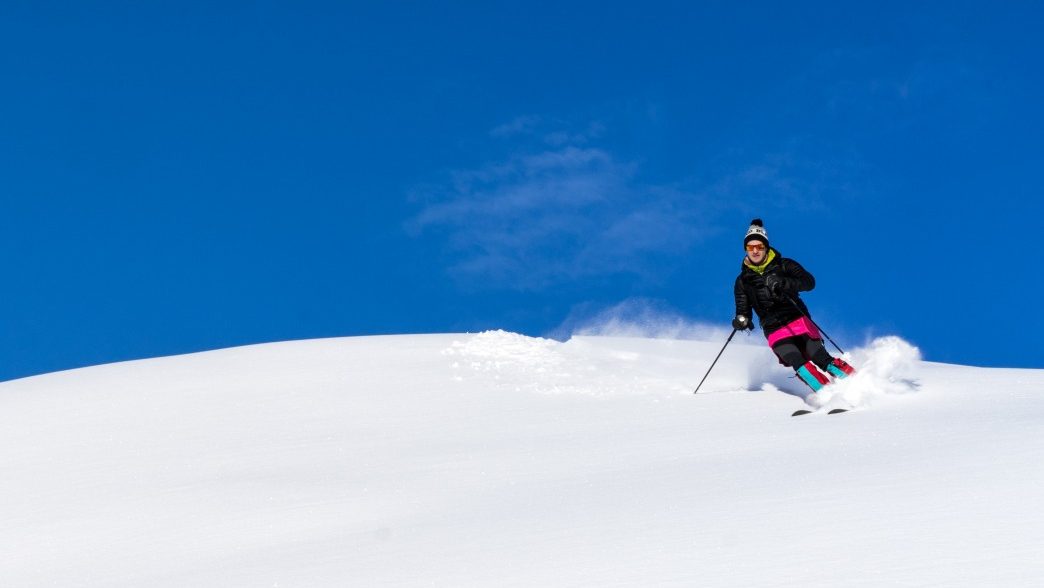
Its good to have a look…like wearing a pink down skirt and retro gaiters. My toes are toasty though!
Food and Water
Food and water won’t make feet warm, but you will get cold more easily if you are dehydrated and hungry. Think of hydration and calories as a precondition for warm toes…Engines need fuel.
I personally find drinking water harder the colder it gets. Make sure you have a system to keep your water from freezing. You might use a water bottle jacket of some sort or those extra socks, lately I have been using soft bottles that I just leave inside my jacket marsupial-style.
Personally, the colder it gets, the more I throw any semblance of nutritional planning out the window and just go for whatever packs the most calories of simple sugar and fat. Snicker bars freeze (cut them up before you head out), cookies and Gummy Bears work pretty well. A bag of bacon never hurts, but if you don’t want to share, try and acquire a taste for sardines. If it’s -40, eat when you’re hungry, eat when you’re not. You will have warmer feet for it.
Overboots
As I said, I find light liners beneficial for a good chunk of the year, and perfectly adequate for most of the winter. For those handful of days when the temp really drops, overboots are my next line of defense. They let you add warmth without changing your boot/liner set up. They are the dorkiest — I have two pairs.
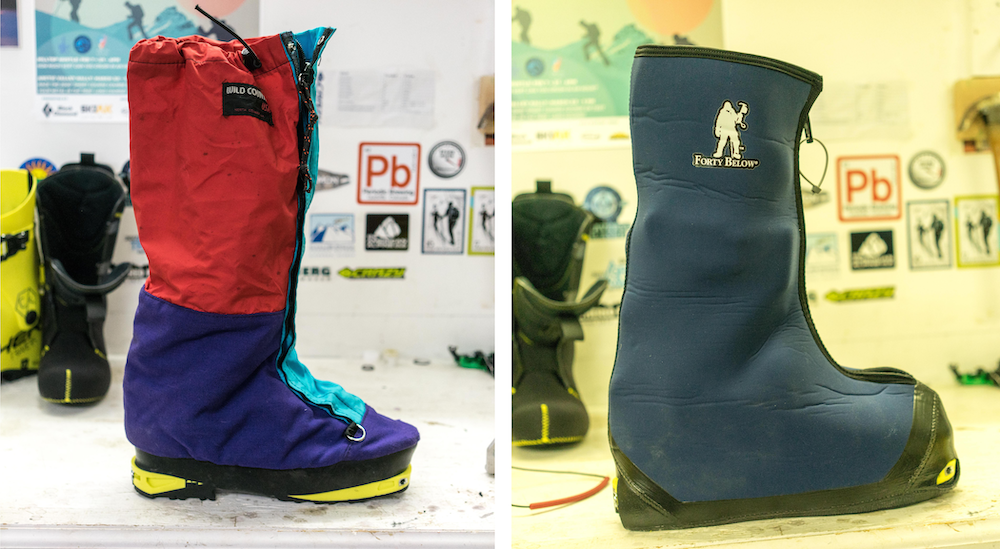
Left: The style points alone are worth it on the Wild Country Super Gaiters.
Right: the aptly named Forty Below.
Both picture show the liners on the Fischer Travers CS.
Wild Country Insulated Super Gaiters
These are a hand-me-down I got from my dad. The color suggests he picked them up sometime in the 1980s. The insulation is no doubt packed out a bit, but they still work great. As far as I know Wild Country no longer makes these, but I have seen similar options at many consignment shops and Outdoor Research makes a similar gaiter. A rubber rand holds these to boot shells with plenty of room for tech fittings to step into bindings. The lower gaiter has the old synthetic insulation and the upper is a simple nylon to keep snow and wind out.
I’d say these Super Gaiters push my race style liners to a temp range similar to a pair of Intuition liners.
Forty Below Overboots
Forty Below makes superb neoprene overboots. They are standard fare on many big mountains around the world, but work just as well adding some hefty insulation for any midwinter tour.
The design is simple: a neoprene sock that zips over your boots. To accommodate tech fittings, you can cut two small ovals on either side of the toe and a rectangle out of the heel. The neoprene doesn’t tend to split, so for the mod I just took a pair of scissors to them and in about three minutes was set. They crowd the binding a bit, especially in the toe piece. This means that this style overboot is not within the guidelines of manufacturer tested specs and likely make tech toes less secure or safe. With that in mind, I have personally had no issues skiing in them; plus, if I were really worried about a particular descent, I can always wear them for the uphill, and stick them in my pack for the down.
[SAFETY NOTE: again — doing this is outside the scope of most tech bindings ‘intended use’]
For both overboots, I unzip them for transitions, to allow the ski/walk bar and cuff strap to engage, then zip back up. Since cold weather often accompanies glacier travel, it is nice to be able to use overboots with leashes. The 1980s Wild Country overboots have a well placed d-ring for leashes to attach. Unfortunately, the Forty Below boots don’t. No problem, I put a zip-tie on the zipper (or you could also use wrap-around style leashes). The Forty Below boots are aptly named and my warmer option. Neither packs down that well, so I only take them with me if I am pretty sure it’s warranted, but am oh so glad to have them on those days when it is.
Boot Gloves offer a similar alternative a bit lighter on the scales.
Jumping Jacks
It’s easier to stay warm then get warm, but if all else fails do jumping jacks and run wind sprints until your toes warm up.
Any other tips out there? …It was -10 this morning, so I’d love to hear.
Dr. Alex Lee lives in Anchorage, Alaska. Alex is a professor at Alaska Pacific University, teaching philosophy and environmental studies. He also works as a sometimes guide, naturalist, writer, and photographer.

